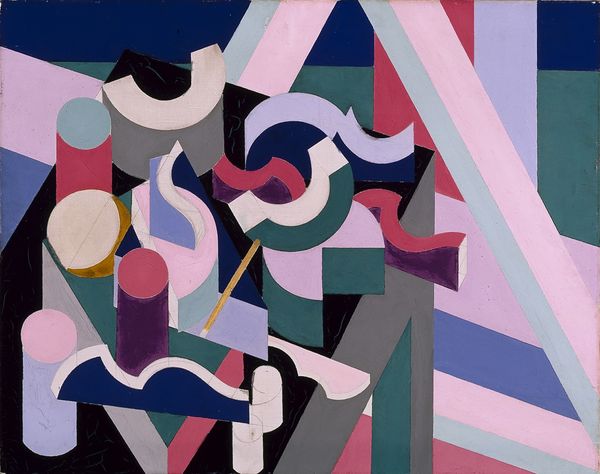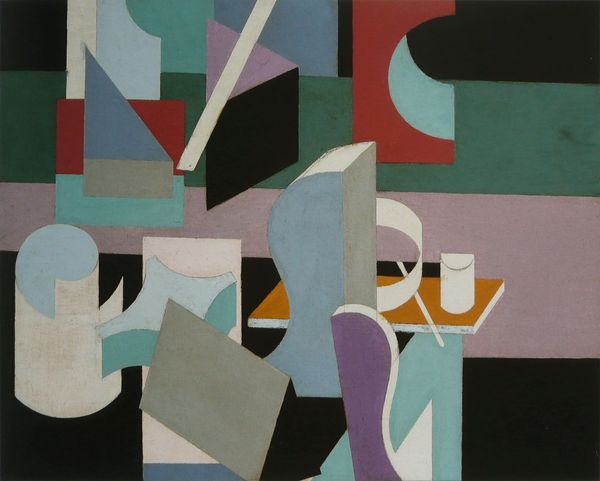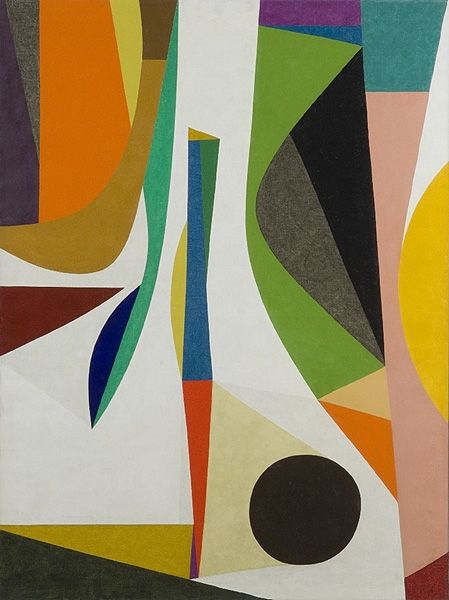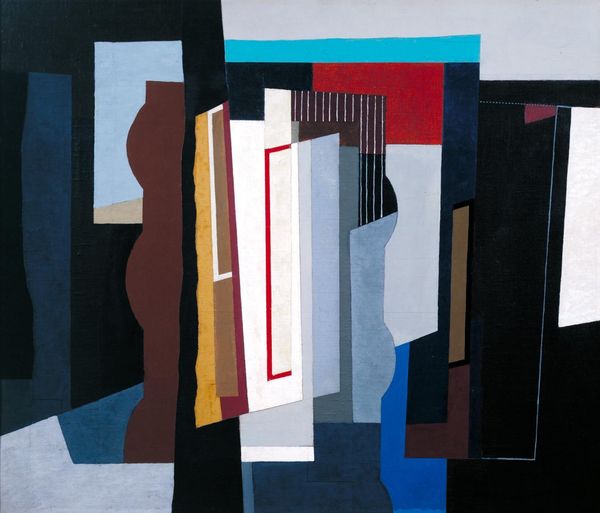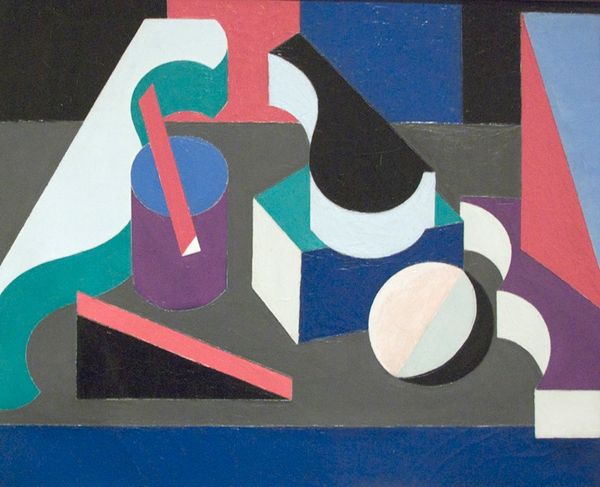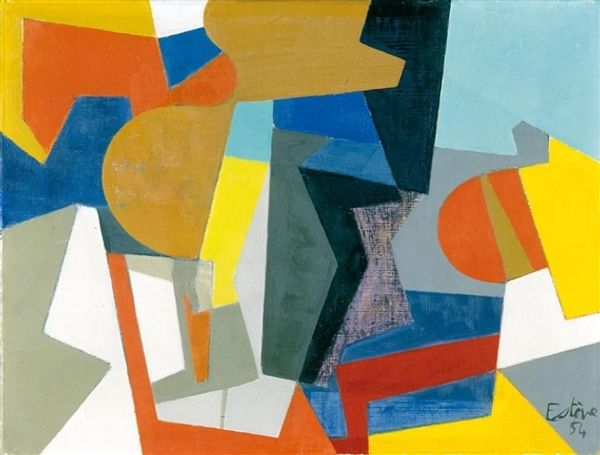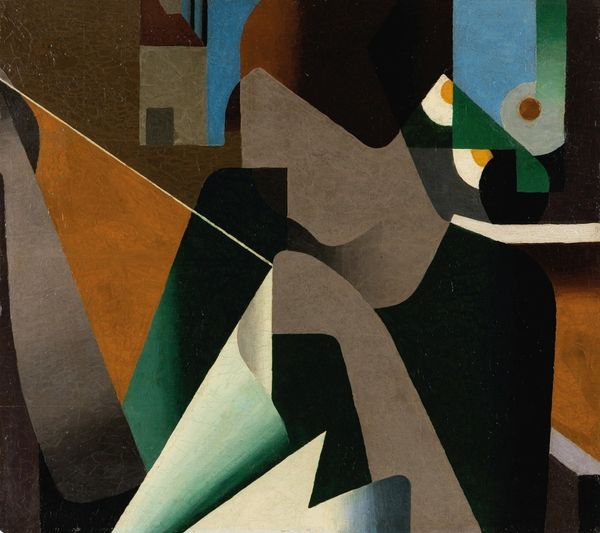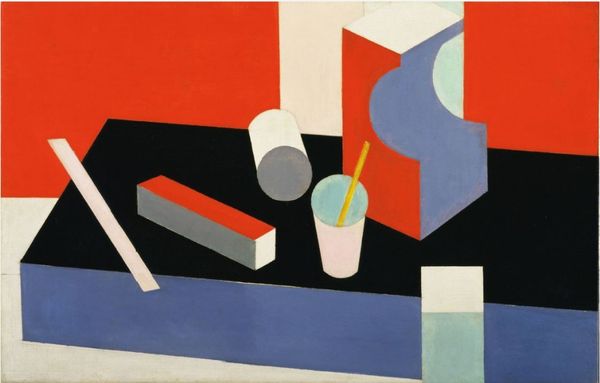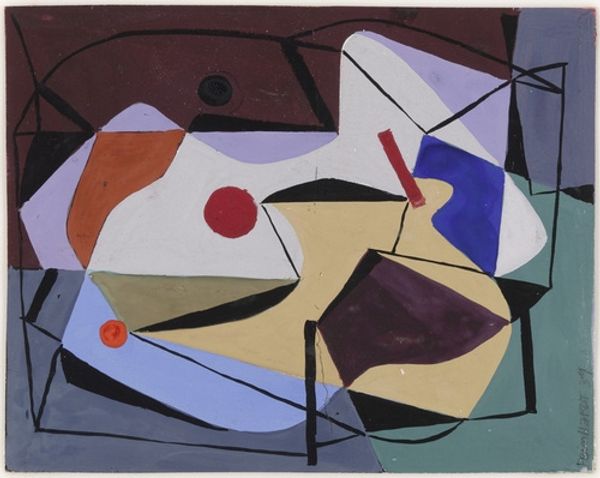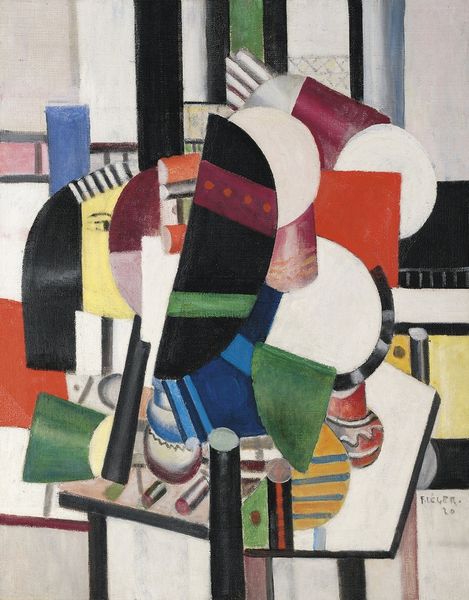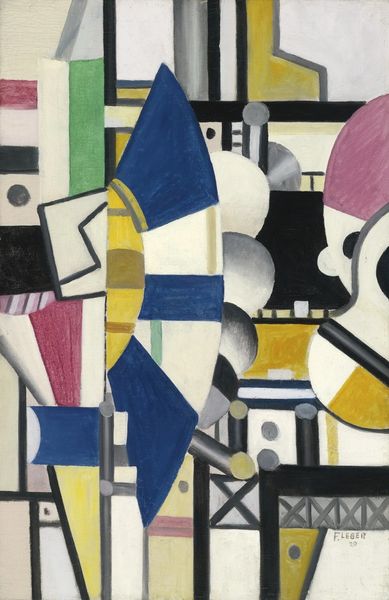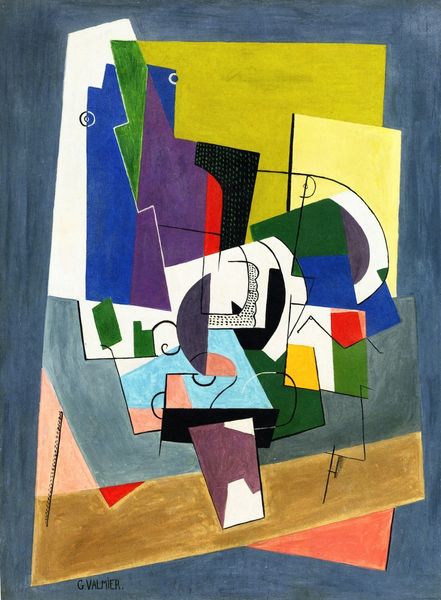
painting, oil-paint
#
cubism
#
painting
#
oil-paint
#
op art
#
pop art
#
form
#
geometric
#
geometric-abstraction
#
abstraction
#
line
#
modernism
Dimensions: overall: 72.4 × 91.4 cm (28 1/2 × 36 in.) framed: 85.7 × 104.5 × 7 cm (33 3/4 × 41 1/8 × 2 3/4 in.)
Copyright: National Gallery of Art: CC0 1.0
Curator: Patrick Henry Bruce painted "Peinture/Nature Morte" around 1924, an oil painting currently held in a private collection. It is strongly representative of his unique form of Synthetic Cubism. Editor: Immediately, the geometric rigidity strikes me—hard-edged forms and cool colors set against this stark black background. It feels almost architectural, like a deconstructed blueprint. Curator: You're picking up on something key there. Bruce was, like many early Modernists, deeply influenced by industrial design and technology. He wanted to find an aesthetic language that could depict modern life. Notice how his work embraces the formal precision and clean lines associated with machinery. His style wasn't about mimesis, or exact copying. Editor: Precisely, that's visible in how the cylinders and semi-circles are arranged—more an exploration of their ideal forms and relationship to one another than a faithful representation of objects in space. Curator: Right, this places Bruce within the broader sweep of avant-garde art. Yet unlike some European cubists who engaged directly in social critique, Bruce lived in France, outside of US cultural concerns. It means he stood slightly apart. This distance might explain why, despite his importance, he remains somewhat less well-known than his peers. Editor: It’s curious, isn't it? Because within the canvas itself there's such a command of spatial relationships, this push-pull between two and three dimensions is exciting, though the forms never truly cohere. I’m intrigued how that black field destabilizes every supposedly volumetric shape in the picture. Curator: Absolutely. What we see here reflects the wider early 20th-century cultural landscape. Artists across disciplines sought to reconcile mass production and abstract concepts of order. Editor: Seeing how those individual elements—shapes, colors, composition—speak to one another opens the work, and makes the familiar strange again. Curator: And that’s the very function of museums like ours. These kinds of close observation prompt reflection on larger societal concerns. Editor: Leaving us to ask: does a painting have to make representational sense to represent the modern world? I suppose "Peinture/Nature Morte" provocatively makes the case that it doesn’t.
Comments
No comments
Be the first to comment and join the conversation on the ultimate creative platform.
